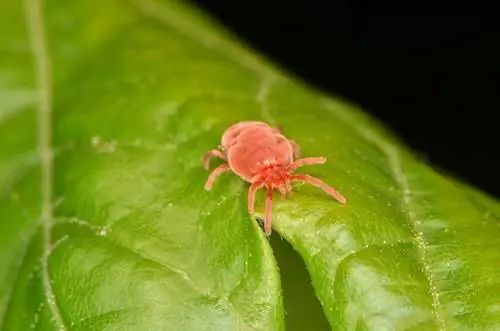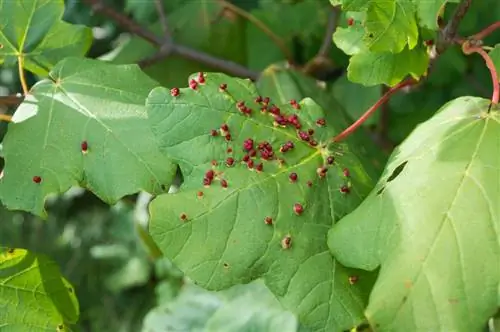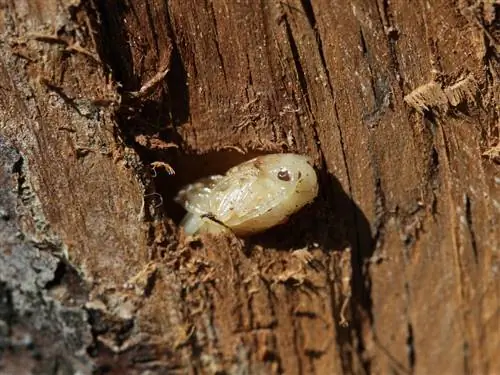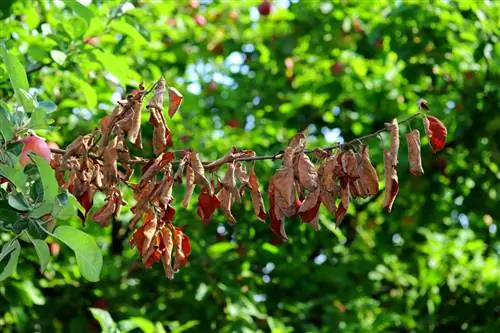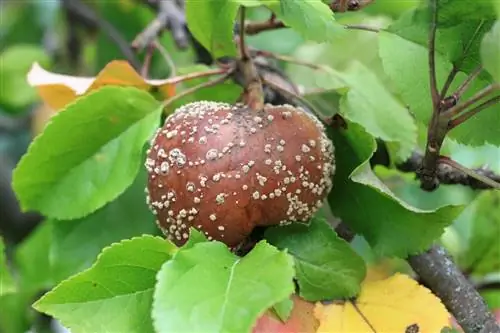- Author admin [email protected].
- Public 2023-12-16 16:46.
- Last modified 2025-01-23 11:22.
Discolored and dried leaves on the apple tree, for which at first glance there is no trigger, are often the result of rust mite infestation. In this guide you will find out how to identify the tiny animals and what helps against them.

How do I recognize rust mite infestation on the apple tree?
Thetiny pestscan only be seen under a strongmagnifying glassThe infestation shows due to the yellow, merging spots on the leaves, which later turn brownish-rusty. They begin to bend downwards and dry up.
What do rust mites look like?
They have aspindle-shaped, yellowish-brown bodywithfour front legs,the hind legs are only partially present. Only about 0.2 millimeters long, apple rust mites (Aculus meinedali) cannot be seen with the naked eye. You can only see the small arachnids under at least 15x magnification through a magnifying glass (€6.00 on Amazon).
How do rust mites damage the apple tree?
The females, which overwinter in the bark cracks and bud scales of the apple tree, migrate to the leaves of the flower clusters in spring andsuck on the fresh leaves andthebuds. Because five to six overlapping generations form in one season, thousands of rust mites can colonize a single leaf over the course of the summer.
The top of the apple leaves then appears dull and lackluster. The foliage browns and dries up. Furthermore, there is a reduced fruit yield.
Unlike other mites, the apple rust mite does not form galls.
How can I fight rust mites on apples?
Predatory mitesof the speciesTyphlodromus pyri,which you can buy commercially and establish,preventan excessivemultiplication of rust mites. Other natural opponents are:
- Hoverflies,
- lacewings,
- Flower bugs,
- some species of birds.
To stop the spread of mites on the apple tree, you should also cut back infected branches and dispose of them with household waste.
There are currently no pesticides approved against the apple rust mite in Germany. However, the tiny arachnids are decimated by anti-scab spraying.
Tip
Successfully preventing apple rust mites
In order to prevent excessive infestation, it is recommended to protect the useful predatory mites. Since the animals react very sensitively to sulfur spraying, these should be avoided if possible. The settlement of predatory mites can be promoted by creating wild shrub hedges, especially by planting dogwood, hazelnut and red honeysuckle.


